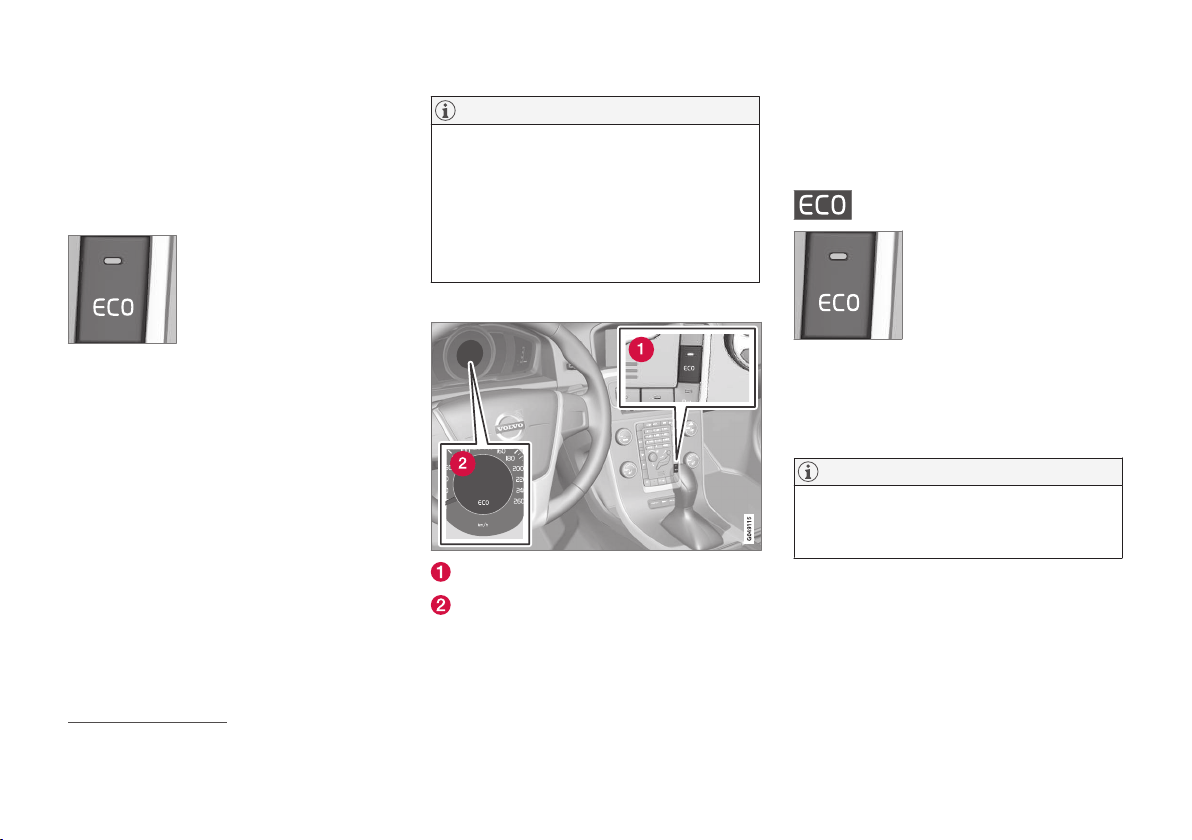Loading ...
Loading ...
Loading ...

STARTING AND DRIVING
}}
* Option/accessory.
273
ECO*
Eco is a function
10
developed by Volvo to give
the driver the opportunity to actively drive more
economically and to help reduce fuel consump-
tion.
Introduction
When Eco is activated, the fol-
lowing functions are modified:
•
The automatic transmission's shifting points
•
The engine management system and accel-
erator pedal response
•
Stop/stop function (Start/Stop – introduction
(p. 268)): the engine can auto-stop before
the vehicle has come to a full stop
•
Eco Coast functionality is activated: engine
braking is disabled
•
Climate system settings: certain functions
(e.g., air conditioning) will be temporarily
reduced or deactivated
NOTE
When Eco is activated, several climate system
parameters are changed and the function of
certain current-consuming systems will be
reduced.
Some of these functions can be restarted
manually but full functionality will not be
restored until Eco is deactivated.
Function
ECO On/Off button in the center console
ECO symbol in the instrument panel
When the engine is switched off, ECO is deacti-
vated and must be reactivated each time the
engine is started (with the exception of certain
engines).
The
ECO symbol will be displayed in the instru-
ment panel and the indicator light in the ECO
button will be on when Eco is activated.
Eco on or off
When ECO is deactivated, the
ECO symbol will not be dis-
played in the instrument panel
and the indicator light in the
ECO button will be off. The
function will remain deactivated
until the button is pressed
again.
Eco Coast
Eco Coast is an integral part of the Eco function
and essentially deactivates engine braking, allow-
ing the vehicle to roll freely.
NOTE
To function optimally, Eco Coast should pri-
marily be used when the vehicle can coast as
far as possible.
When the driver releases the accelerator pedal,
the transmission is automatically disengaged
from the engine and engine rpm will be reduced
to the idle level (approx. 700-800 rpm), which
helps reduce fuel consumption.
10
Option on models equipped with certain 4-cylinder engines
Loading ...
Loading ...
Loading ...